Jump to:
If you’re wondering how to care for permed hair, there are quite a few things to keep in mind. After all — perms are investments. But although it may seem overwhelming, it’s not hard. Read on to learn all you need to know.
How to Care for Permed Hair in 5 Easy Steps
A perm is a significant change for your hair, and you’ll need to take the proper steps to care for it and keep it healthy.
- Understand how perms work
- Prep for your perm
- Immediate aftercare
- Long-term care
- Styling your perm
It’s critical to follow each of these steps, as missing one can result in damaged hair, and at a minimum, wasted money.
1. Understand How Perms Work
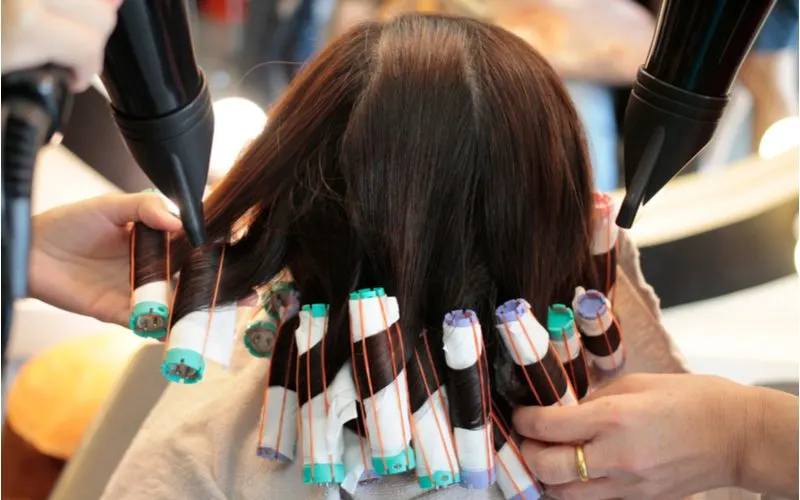
Praiwan Wasanruk/Shutterstock
Perm is short for permanent wave, and it’s definitely evolved since the spiral perms of the 1980s. And those weren’t even the first perms. “A New or Improved Process of Waving Natural Hair on the Head” was patented in 1909, which means that it’s been around for well over a century. While the process has been refined and improved, the basic science remains the same.
Strands of hair are about 95% keratin, which is a protein. Cysteine residues on keratin molecules form disulfide bonds. In a typical perm, the reducing agent ammonium thioglycolate is used to break those disulfide bonds.
This lets the keratin molecules form a new shape (the curl). Then, hydrogen peroxide or another neutralizer is used to reverse the reducing agent, which allows the new disulfide bonds to form and lock the shape into place.
How does that look in a salon? After washing (and cutting, if desired) the hair, the stylist wraps the hair on curling rods. Smaller rods produce tighter curls, and larger rods make looser waves. A combination of sizes can be used for a more natural look. Longer hair may require several sets of curlers, so it takes quite some time to get all the hair rolled.
The reducing agent is then applied to the hair and left to sit while the keratin molecules take on their new shape. The agent is rinsed out and the neutralizer added to make the new curls permanent. Modern acid perms and digital perms also use heat to help set the curls.
Acid perms and digital perms were designed to be gentler than the traditional perm, but all perms change the chemical structure of the hair (otherwise, they wouldn’t be permanent). Permed hair is weaker, more vulnerable, and requires special care so that you don’t damage either the hair or the curls.
2. Prep for the Perm
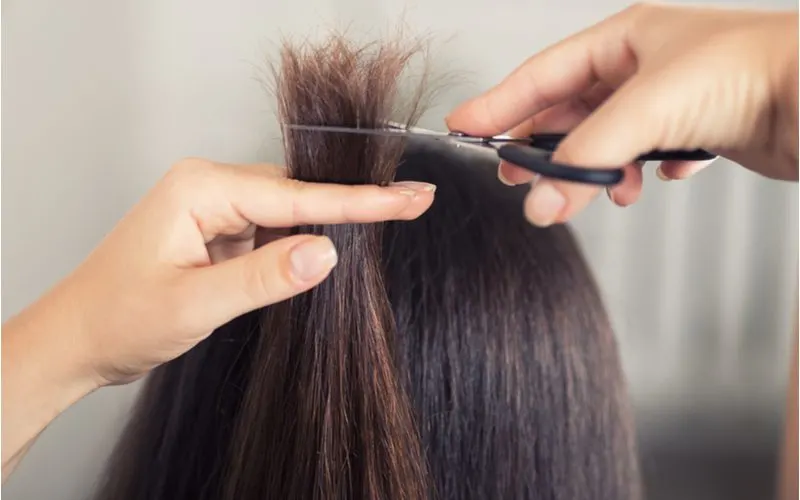
Alter-ego/Shutterstock
The best way to care for permed hair is to go into the perm process with your hair as healthy as possible to start with. Perms work best on virgin hair, which is hair that’s never been chemically treated in any way. It’s possible to have success perming hair that has been dyed, but hair that has been bleached or highlighted is not generally suitable for this process.
If your hair is dry or brittle, you shouldn’t get it permed until you can repair it. You may be able to cut off some of the dry, damaged ends and rejuvenate the rest with a deep conditioning treatment or two.
This is something that you’ll need to discuss with your stylist. They may be able to recommend some treatments or masks to get your hair into good enough shape for the perm process.
You should definitely trim your hair before you have it permed so that the stylist is working with the healthiest hair you have. There is no point in wrapping dry split ends onto tiny rollers and saturating them with chemicals, only to have them break off.
3. Immediate Aftercare
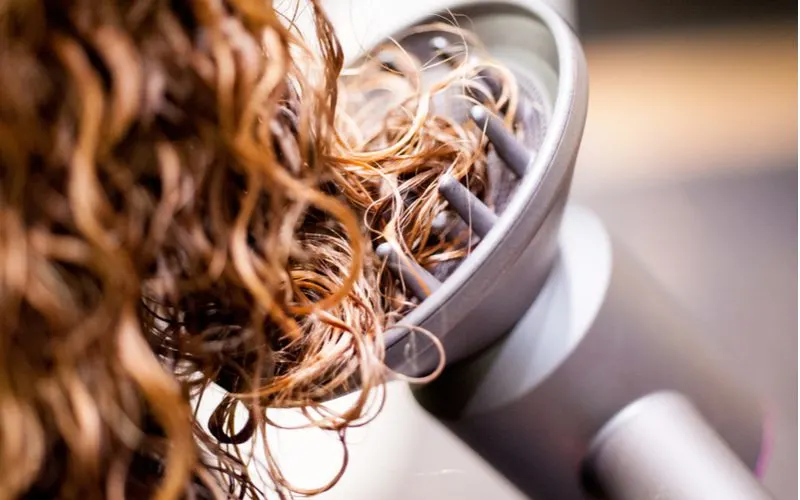
Gracielleademonne/Shutterstock
Once you leave the salon with your new curls, you need to leave them alone as much as possible for a few days! Yes, you’re “done” when the stylist rinses out the neutralizer, but your curls actually need some time to finish setting in for good.
This process is mostly invisible, so don’t think that because your new curls look great now, you won’t have to follow any sort of aftercare rules. You will, or at least you should if you want to keep your curls looking great.
And just how do you do that? For starters, don’t shampoo your hair for at least two days. You also shouldn’t stand under the shower or soak it for the same two days. If you’ve seen Legally Blonde, you know why.
Not all water is off limits, however. There’s no need to panic if you splash a little when you’re washing your face, and you can spritz your hair with water to reactivate the curl or simply dampen a curl or two to push them into position.
Don’t brush for 24 hours. You may use a wide-tooth comb or pick to detangle if needed.
Don’t get into a chlorinated swimming pool or hot tub for seven days after your perm. This applies even if you cover your hair or keep it above the water level. The condensation from the pool or hot tub can still get into your hair and do damage.
Don’t dye your hair for at least two weeks after your perm. If you choose to dye your hair after the waiting period, remember that your hair is now chemically treated and choose products accordingly (or make sure that your stylist is aware so that they can choose the right products).
This may feel like overkill since a perm is permanent, but what you do during the first few days after a perm is critical. If you fail to take care of your new perm properly, it could loosen or fall out, ruining the look you were going for.
On that note, you may think that the curls look too tight now, and you wouldn’t mind if they softened up a bit. Don’t take matters into your own hands here. They will relax on their own over the next few days to a week. If you try to relax them by washing or combing now, you may end up with no curls at all – or worse, extremely uneven curls if you interrupt the settling-in process.
This doesn’t necessarily *have* to be part of the immediate aftercare – you can do it any time you like – but many people with permed hair prefer sleeping on satin or silk pillowcases. This isn’t as extravagant as it sounds; many places sell them fairly inexpensively and in a wide range of colors.
Your hair is less likely to tangle when you sleep on a satin pillowcase, and curls are notoriously tangly. If you can avoid tangles, you can also avoid some breakage, and brushing will be easier and less traumatic to your hair. You could also wrap your hair in a silk scarf to sleep if you don’t want to change out your bedroom décor. This accomplishes the same thing.
4. Long-Term Care
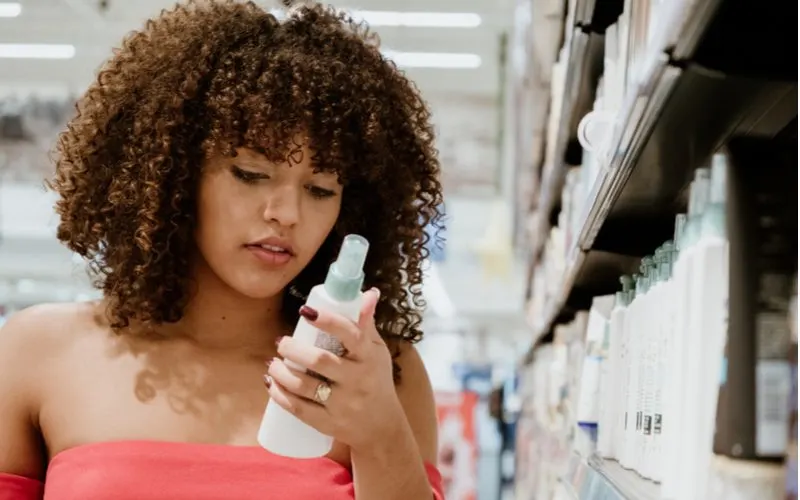
Brastock/Shutterstock
After your curls are fully set, and you’ve been able to wash and comb your hair (more on that later), there are still a few things that you need to be aware of to keep your permed hair healthy. In short, you should try to do as little as possible to your permed hair.
Try to avoid anything that could change it chemically. You should never bleach or highlight permed hair. Both of those chemical processes are very damaging to hair, and combining them will likely break your hair beyond repair. Some people have even reported that their hair broke off in chunks.
While you can swim in a chlorinated pool or soak in a chlorinated hot tub after the waiting period has passed, moderation is still advised. Too much exposure to chlorine will open up the cuticle of your hair, and this will relax your curls – perhaps permanently, and perhaps unevenly too.
The same applies to washing your hair too much. While everyone’s hair and scalp are different, and personal hygiene is definitely important, you shouldn’t wash your hair any more than you absolutely need to. You may find that this isn’t quite as often as you thought. Permed hair may not show grease and dirt as much as fine, straight hair.
When you wash your hair, remember that it’s now chemically treated and curly. Your favorite pre-perm shampoo and conditioner may not be suitable anymore. You need to select products that are engineered for chemically treated, curly hair.
This likely means a gentler shampoo and a deeper conditioner than you used previously. As always, you’ll want to be sure to avoid surfactants, parabens, and phthalates for your health and the health of your hair.
Lastly, be sure to have your permed hair trimmed at least once every three months (six to eight weeks is preferable if possible). Remember, your hair will be drier than it was before, and curly hair tends to tangle more no matter what you do. This means that you’ll likely have more dry, split ends that need to be removed to keep your permed hair healthy.
Also, remember that long hair is heavier than short hair, and the weight can pull the curl out of your hair. Your curls will be livelier when you keep your hair at an optimal length without any split ends to weigh it down.
5. Style Your Permed Hair
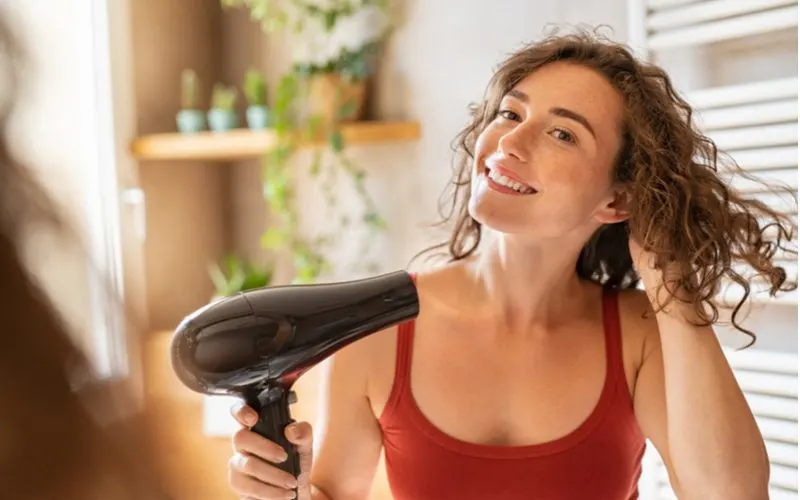
Rido/Shutterstock
Welcome to the world of curls! You’ll certainly enjoy all the new things that you can do with your new hair. There are a few things to keep in mind to keep your hair as healthy as possible, though.
After you wash and condition your hair, towel-dry it gently with a microfiber towel. Here, “gently” means that you blot your hair dry. You don’t rub or scrub it, and you don’t wrap it in a tight turban. Microfiber towels are less likely to snag your hair than cotton terry cloth.
Apply a light moisturizer or leave-in conditioner and detangle your hair with a pick or a wide-toothed comb. Never brush your hair when wet. Not only will you brush out the curls, but you’ll also damage or break your hair.
Scrunch your hair as it air-dries to tighten and shape your curls. You can blow-dry your hair with a diffuser if you need to, but it’s best to use as little heat as possible to keep your permed hair healthy.
If you do use a blow-dryer, you absolutely need to use a high-quality heat protectant spray. You may also want to use a texturizing spray or curl fixative to define your curls and keep them tight. Your perm should last about six months, depending on your hair and the tightness of the initial curls.
If you choose loose curls and you have hair that’s at least shoulder-length, it should grow out nicely. The waves will relax even more as your new straight hair grows in, and the transition will be natural. However, if you have shorter hair and a tighter perm, you’ll have to decide whether to get your roots permed to match or blow out your permed curls to match the new straight growth.
Things to Consider

Roman Ramborskyi/Shutterstock
Perms may look a lot different now than they did in your mother’s or even grandmother’s day, but they are still a harsh chemical process, and you need to consider a few things.
- You should touch your hair as little as possible in the 48 hours after your perm, and you definitely shouldn’t wash or brush it. Keep this in mind when you’re scheduling your perm.
- You’ll probably need to replace most of your current hair care products. After you leave the salon, your hair will be chemically treated and curly. Both of those designations require specialized products.
- You’ll also need to budget for additional haircuts, since permed hair benefits greatly from regular trims.
- The curls you have now are permanent, but your new hair will be growing in straight. You’ll have to make some style decisions when this happens.
So, How Do You Care for Permed Hair?
Now that you have charming new curls, you’ll need to take care of them to keep them looking their best. This means a waiting period to let the perm “take,” the use of the appropriate products, and as little heat styling as you can manage.
